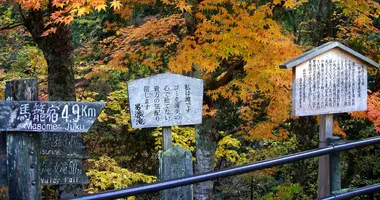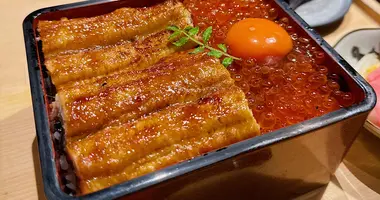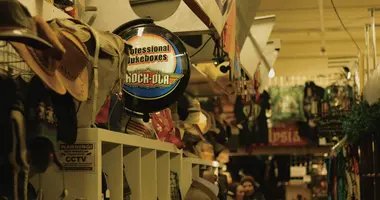Shinjuku 新宿
- Published on : 05/10/2020
- by : Japan Experience
- Youtube
Formerly residential, the exciting Shinjuku area, dominated by the city hall, by the famous architect Kenzo Tange (1913-2005), is a concentration of skyscrapers and department stores.
Shinjuku Area Guide
Shinjuku, on the western edge, at roughly '9 o'clock', of the Yamanote Line, is truly a city unto itself, and is designated one of Tokyo's seven sub-metropolitan centers, or fukutoshin.
First and foremost, Shinjuku means shopping, eating, and partying. Shinjuku has several huge department stores, music stores, electronics stores, and hundreds and hundreds of bars and restaurants catering to every taste imaginable.
Shinjuku is divided into Higashi (east) and Nishi (west) Shinjuku by the train lines that run through Shinjuku Station. Nishi Shinjuku in particular exudes wealth and power with its towering skyscrapers.
One of the most eye-catching is Kenzo Tange's inspired citadel, the Tokyo Metropolitan Government Buildings, or 'Tocho', daily home to 13,000 Tokyo bureaucrats.
Nearby is the Hyatt Park Hotel (venue for the film 'Lost in Translation') occupying another soaring Kenzo Tange construction: the Shinjuku Park Tower.
Other notable buildings in the Shinjuku area are the tapered and honeycombed Mode Gakuen building (by Tange Associates, the architectural firm headed by Kenzo Tange's son), and the 54-storey Tokyo Opera City with its hi-tech NTT Intercommunication Center, a venue for futuristic exhibitions and events.
Higashi Shinjuku, on the other hand, retains the district's original downtown shitamachi roots. This atmosphere is summed up in Shinjuku's three most well-known entertainment districts: Kabukicho, Shinjuku Ni-chome, and the odd little enclave known as the 'Golden Gai.' Omoide Yokocho, like Golden Gai (pronounced like "guy"), is another district of narrow alleys, though crammed with izakaya-style eateries.
Shinjuku Shopping
During the day, Shinjuku's massive department stores, from Shinjuku Station eastwards, are a culture unto themselves. Each caters to a different class of customer, from the bargain basement Keio, to run-of-the-mill Odakyu, through to ubiquitous Marui, Takashimaya and up to the king of them all, Isetan.
Basement floors are a grocery/delicatessen/confectionery cornucopia - full of free munchies (samples are put out to be eaten, not stared at: foodies, dig in - splash out!), and the service is world class at Isetan.
Read more here about Shinjuku shopping, with a shop-by-shop guide to the major stores including BIC Camera, Yodobashi Camera, H&M, and Kinokuniya.
Shinjuku Nightlife
Kabukicho is a red-light district off Yasukuni-dori Avenue, accessible from the Kabukicho or Shinjuku Kuyakusho-mae (Shinjuku Ward Office) intersections.
Kabukicho is the setting for much of Natsuo Kirino's novel Out - a dark tale of Tokyo despair.
Kabukicho is renowned for its thousands of restaurants, bars, nightclubs and its numerous love hotels. There are plenty of restaurants and bars that cater to every taste to keep you from having to wander for too long.
The Robot Restaurant is Kabukicho's most famous entertainment for overseas tourists, and is recommended for its exuberant show combining aspects of Japanese tradition with anime- and manga-inspired high-tech fantasy. The Robot Restaurant is one of the few entertainment offerings in Kabukicho that the overseas tourist can fully enjoy with peace of mind, and without having to exercise caution.
In many other Kabukicho establishments, however, it pays to be cautious.
Shinjuku restaurants
Shinjuku has thousands of places to eat with an amazing range of international styles on offer from African eateries, Middle Eastern, South American, South East Asian, and more. All of Shinjuku's major department stores have restaurant floors as well.
Shinjuku Ni-chome
Shinjuku Ni-chome is the heart of the Tokyo LGBT scene and the largest gay enclave in Asia. Shinjuku Ni-Chome is accessible from the Central East Exit or South-East Exit of Shinjuku Station and is about 8 minutes' walk. This conclave of mostly tiny bars, as well as more spacious bars, clubs, bookshops, and cafes.
Golden Gai
Golden Gai is a block of bars just east of Kabukicho that preserves the Tokyo of the 1960s. Famed for its dense rows of tiny bars and its unabashed shabbiness, this ground-level warren of tiny bars attracts a multitude of different types of people. Of the over 200 bars here, there are many that welcome overseas visitors. Look for signboards with English.
Shinjuku Park
Need a break from the busy city? Beautiful wide Shinjuku Gyoen Park is mere minutes walk away and considered one the best of Tokyo's many parks.
Museums in Shinjuku
Museums in the Shinjuku area include the Seiji Togo Memorial Sompo Museum of Art dedicated to the works of western-style artist Seiji Togo (1897-1978). There are also works on display by Vincent van Gogh, Paul Gauguin and Paul Cezanne's "Pommes et Serviette". The Sword Museum is close to Hatsudai Station and has around 150 examples of Japanese swords.
Shinjuku Access
Shinjuku Station and Yoyogi Station are the main points of access on the Yamanote Line to the heart of Shinjuku. Sendagaya Station on the Chuo-Sobu Line is adjacent to Shinjuku-Gyoen Garden.
Other stations serving the Shinjuku area are Minami-Shinjuku (Odakyu Odawara Line), Nishi-Shinjuku (Marunouchi Line of the Tokyo subway), Shinjuku-Nishiguchi (Toei Oedo Line), Shinjuku San-chome (Tokyo Metro Marunouchi, Fukutoshin Line, Toei Shinjuku Line), Kokuritsu-Kyogijo (Toei Oedo Line) and Tocho-mae (Toei Oedo Line).
Yoyogi, Harajuku and Shibuya stations lie almost directly south of Shinjuku Station on the Yamanote Line.
Shinjuku Station has a number of highway bus terminals with buses to and from many parts of Japan. The Keio WE bus is a 100 yen loop bus that connects east and west districts of Shinjuku.
















